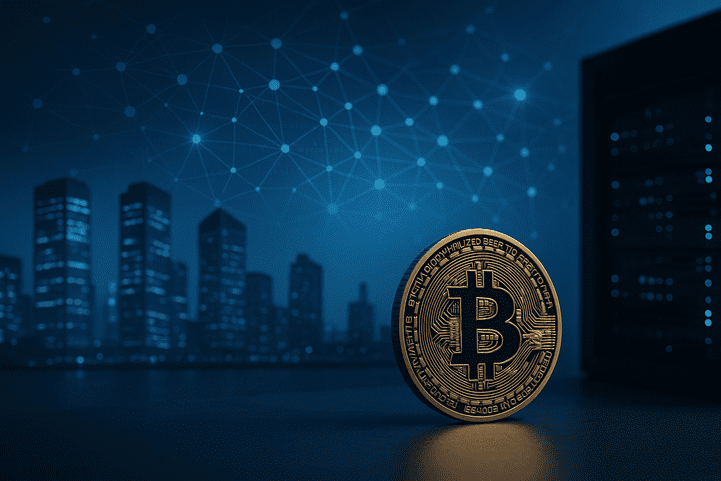SWIFT blockchain payments, Linea, Ethereum layer 2, Consensys, Joe Lubin, TOKEN2049 Singapore, zk-EVM rollup, DeFi and TradFi, Ripple XRP Ledger, total value locked, 1.5 transactions per second, one-fifteenth fees, Bank of America, Citi, JPMorgan, Toronto-Dominion Bank.
SWIFT blockchain payments select Linea, says Joe Lubin
Joe Lubin confirmed that SWIFT blockchain payments will run on Linea, an Ethereum layer 2 built by Consensys.
He made the comment during a fireside chat at TOKEN2049 Singapore. Earlier, SWIFT announced the project with Consensys and more than 30 TradFi institutions, but it did not name a chain.
Joe Lubin said SWIFT CEO Javier Pérez-Tasso did not mention Linea in the initial banking briefing. He described a staged disclosure to that audience. The target is a 24/7 settlement system for SWIFT blockchain payments.
Lubin stated the effort intends to connect DeFi and TradFi workflows. His remarks came in a session with Gareth Jenkinson. The quote recorded on stage was:
“It’s about time to bring the two streams, DeFi and TradFi, together.”
Linea and Ethereum layer 2 basics with zk-EVM rollup
Linea is a zk-EVM rollup on Ethereum layer 2. The report cites around 1.5 transactions per second today. Fees sit near one-fifteenth of Ethereum mainnet costs, according to the same materials.
Linea shows total value locked of about $2.27 billion, per L2BEAT. That places Linea fourth among Ethereum layer 2 networks. Only Arbitrum One, Base, and OP Mainnet rank higher by total value locked.
Because zk-EVM rollup networks mirror the EVM, teams can port smart contracts with fewer changes.
That feature supports SWIFT blockchain payments tests. It lets banks validate execution while using Ethereum as the settlement layer.
Trials include Bank of America, Citi, JPMorgan, TD Bank
SWIFT blockchain payments trials will involve Bank of America, Citi, JPMorgan Chase, and Toronto-Dominion Bank.
The program measures flows, reconciliation, and uptime on Linea. It also checks how SWIFT standards map to Ethereum layer 2 rails.
SWIFT handles about $150 trillion in annual payments on traditional rails. The Linea pilot adds a blockchain option inside that environment. Consensys provides the Linea stack and coordinates the tests with the participating banks.
Previous SWIFT experiments linked tokenized assets across chains. The current phase runs a payment ledger on a specific Ethereum layer 2. The design uses zk-EVM rollup proofs anchored to Ethereum finality.
How Linea compares with Ripple XRP Ledger in payments
Reports note a competitive angle with Ripple XRP Ledger. Ripple XRP Ledger is a public chain used in bank settlement pilots. It targets cross-border payments and messaging.
SWIFT blockchain payments on Linea take a different path. The program keeps close ties to Ethereum tooling and security. Institutions testing Ethereum layer 2 apps can extend work to Linea with limited changes.
The update does not replace existing rails. It adds a Linea option within SWIFT architecture. Data from Bank of America, Citi, JPMorgan, and TD Bank will show operational behavior at scale.
Joe Lubin’s notes on Linea beyond payments
Joe Lubin described Linea as open infrastructure that communities can build on. He used the phrase “user-generated civilization” and “user-generated content.”
The remarks placed Linea in a wider context than SWIFT blockchain payments.
He referenced DAOs as examples of bottom-up coordination. DAOs rely on smart contracts and on-chain voting to manage treasuries. Many remain small, but the tooling overlaps with enterprise governance needs.
The session tied Linea security to Ethereum settlement. zk-EVM rollup proofs verify batches on L1. That model underpins the SWIFT blockchain payments trials at TOKEN2049 Singapore.
Numbers that frame Linea today
Throughput at 1.5 transactions per second is a current baseline. Actual rates depend on batch sizes and proof intervals. SWIFT blockchain payments tests will record those parameters in practice.
Total value locked of $2.27 billion indicates deployed liquidity and app activity.
TVL does not equal payments capacity, but it shows network usage. Liquidity placement and bridge design will remain key checkpoints.
Fees at one-fifteenth of Ethereum mainnet define the cost profile. That level suits frequent settlement messages. It also aligns with the Ethereum layer 2 goal of lower costs at scale.
Disclosure:This article does not contain investment advice or recommendations. Every investment and trading move involves risk, and readers should conduct their own research when making a decision.
Kriptoworld.com accepts no liability for any errors in the articles or for any financial loss resulting from incorrect information.

Tatevik Avetisyan is an editor at Kriptoworld who covers emerging crypto trends, blockchain innovation, and altcoin developments. She is passionate about breaking down complex stories for a global audience and making digital finance more accessible.
📅 Published: October 3, 2025 • 🕓 Last updated: October 3, 2025


